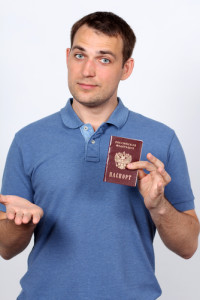 As the weather becomes warmer, New Yorkers are already planning their getaways for the upcoming Spring Break. Some will travel to Europe, and others will head to the Caribbean, but the most popular international destinations—Cancun, Puerto Vallarta, and Acapulco—are located in Mexico. The scenery and atmosphere make each of these vacation hotspots an attractive option, but it seems that a growing number of Americans have set their sights on Mexico for an entirely different reason: dental tourism. Astoria, NY dentist Dr. Jeffrey Leibowitz cautions that this dangerous practice could have disastrous consequences for your oral health.
As the weather becomes warmer, New Yorkers are already planning their getaways for the upcoming Spring Break. Some will travel to Europe, and others will head to the Caribbean, but the most popular international destinations—Cancun, Puerto Vallarta, and Acapulco—are located in Mexico. The scenery and atmosphere make each of these vacation hotspots an attractive option, but it seems that a growing number of Americans have set their sights on Mexico for an entirely different reason: dental tourism. Astoria, NY dentist Dr. Jeffrey Leibowitz cautions that this dangerous practice could have disastrous consequences for your oral health.
What Is Dental Tourism?
Most people are familiar with the concept of medical tourism, which involves traveling to a country outside of the United States in search of lower-cost prescription medications, surgical procedures, and cosmetic surgery. The number of Americans seeking dental care outside of the US, especially in third-world countries, has increased dramatically. Cosmetic and major restorative dentistry, including veneers, dentures, dental implants, and gum contouring are the most sought-after treatments. It’s big business for dentists in Mexico, who have quickly set up shop along the US-Mexican border and in popular vacation cities. For example, the border town of Los Algodones holds the dubious distinction of having more dentists—350 within a four-block radius—than any other part of the world.
Substandard Education and Credentialing
The vast majority of dentists practicing in Mexico receive their education and training outside of the United States. Dental students in Mexico are not required to complete an undergraduate degree and may enroll in a four-year program straight out of high school, whereas most American dental schools prefer candidates who have completed a four-year undergraduate degree. Before applying to an accredited dental school, the candidate must pass the Dental Admission Test. Upon acceptance, he or she must complete an additional four-year dentistry program. Requirements for dental hygienists vary, as well.
Minimal Oversight
When you entrust your oral health to the care of Dr. Jeffrey Leibowitz, you can take comfort knowing that all aspects of our practice are accountable to various boards, agencies, and regulations. Our dental technology and equipment must meet the FDA’s stringent safety requirements, and we will unfailingly follow proper procedures for taking x-rays, sterilizing our treatment areas, and creating a safe and effective treatment environment. Determining whether a foreign dentist abides by comparable rules is extremely difficult, especially in countries where English is not the native language. Some dentists outside of the United States do not make this information available to prospective patients
Complications and Unsanitary Conditions
In countries where the public water supply is not potable, you face an even greater risk of infection. Dr. Leibowitz notes that certain preexisting medical conditions, such as those that affect the heart, kidneys, and lungs, can cause complications in even the most sterile environment. To undergo dental treatment in hazardous settings is too great a risk, and the problem is compounded when a country has similarly questionable regulations for its hospitals and emergency doctors.
Finally, consider the complications that arise from shoddy dental work in a foreign country. With lax requirements for dentists’ education and credentials, it is reasonable to assume that the quality of work will suffer accordingly. What happens if your veneer falls off or your filling becomes loose once you’ve returned home, or if your new dentures suddenly feel uncomfortable? Returning to the dentist’s office would be a costly, time-consuming affair.
Trust your Astoria, NY dentist. To learn more about cosmetic, preventive, and restorative dentistry in Queens, or to schedule an appointment with Dr. Jeffrey Leibowitz, contact us at (718) 728-8320. We are pleased to serve patients living in upstate New York, New Jersey, NYC, and the surrounding communities.


